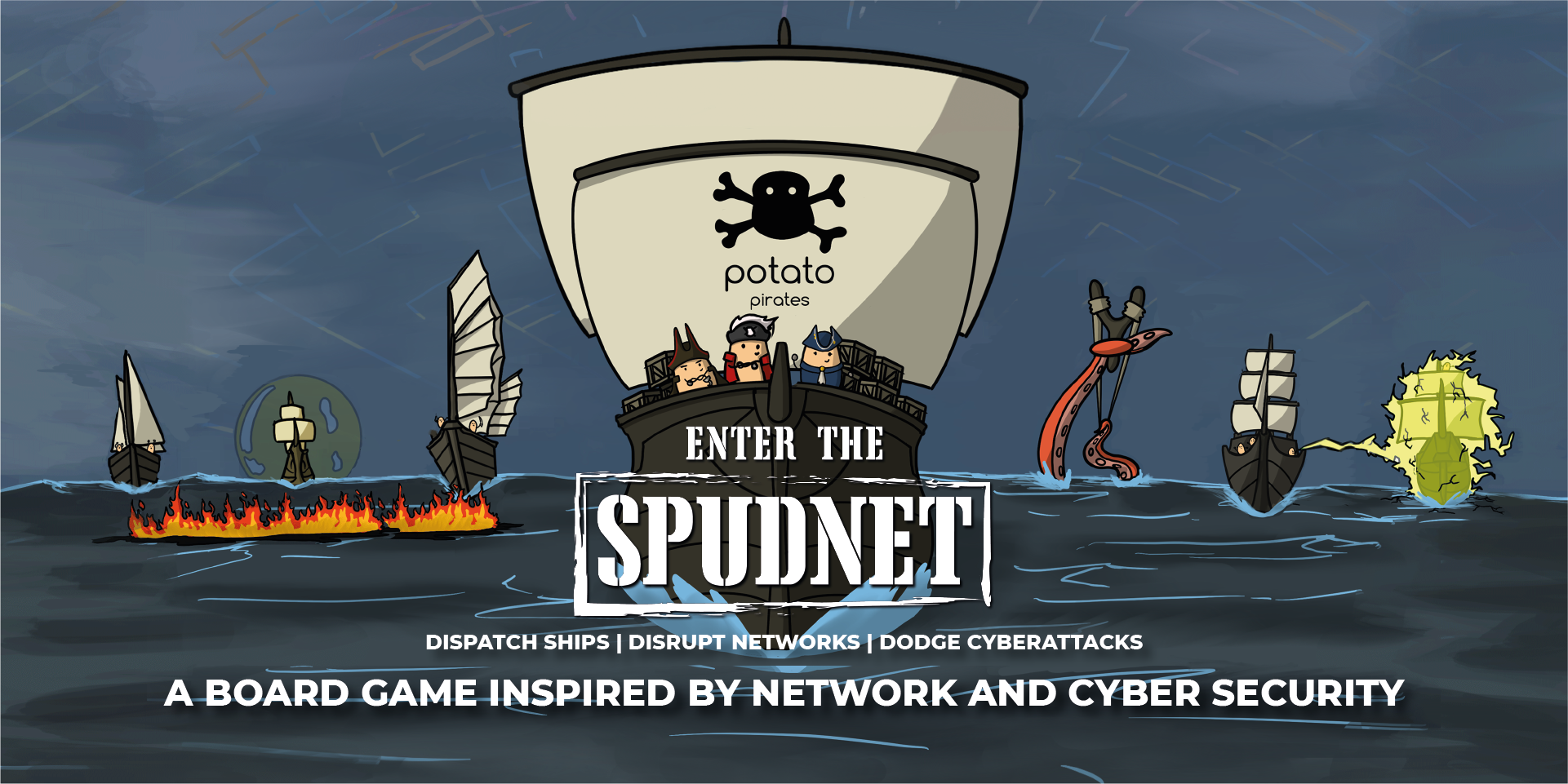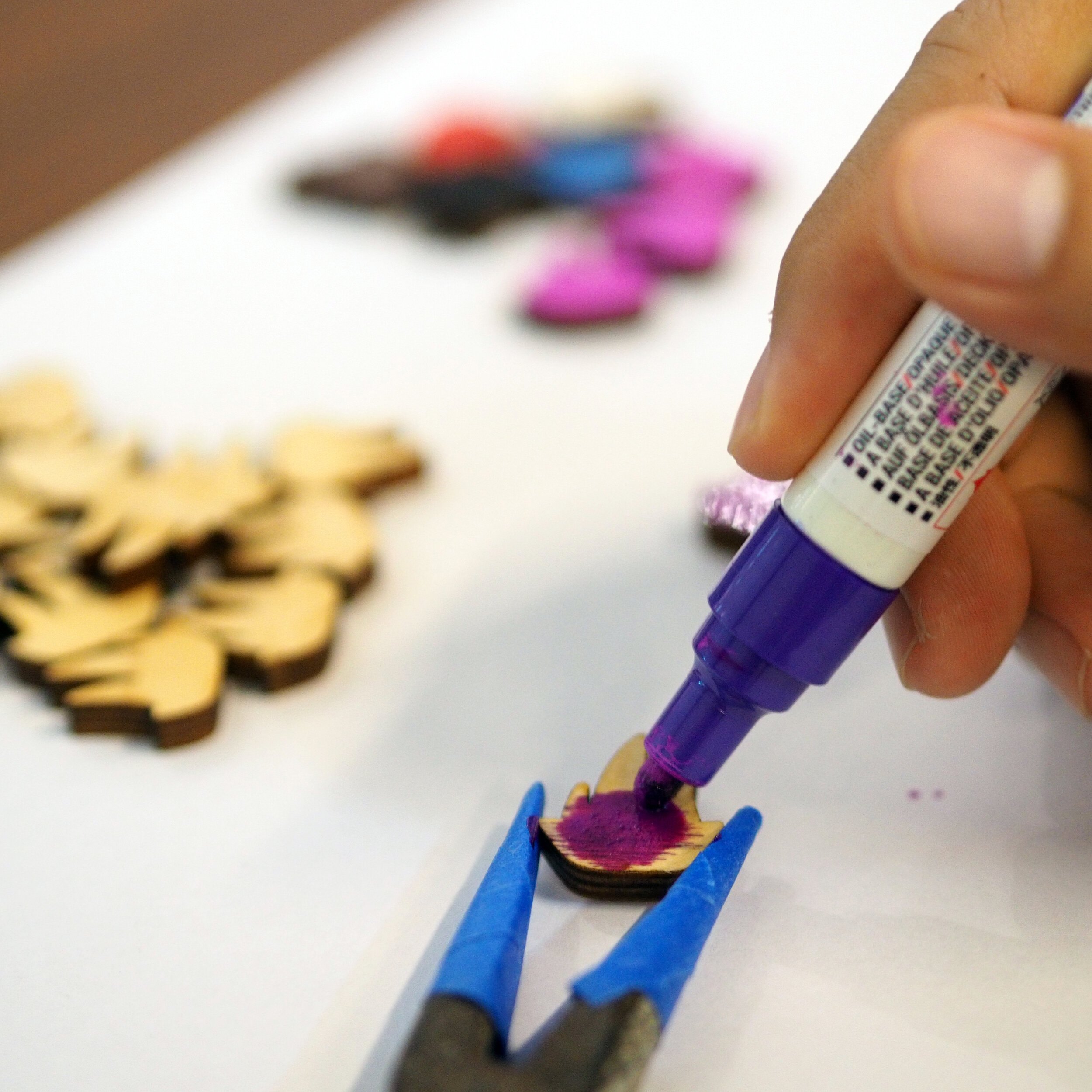
OVERVIEW
Potato Pirates 2: Enter The Spudnet, is a board game of sabotage and strategy that gives one a bird’s eye view of cybersecurity concepts in minutes. The board itself represents the Internet and every movement on the board is a visualization of how data travels
(or propagates for you techies) on the Internet in the most intuitive way.
MY ROLE
Marketing & Business Development Lead
Potato Pirates 2: Enter The Spudnet raised over S$269,000 on Kickstarter!
The Challenge
With our world becoming increasingly connected to the Internet, the threat of cyber attacks is growing in prominence every single day. Security breaches have increased by 67% since 2014 (Accenture, 2019). From a layman’s perspective, the Internet is just a complex, intangible black box. It is difficult for people to comprehend its inner workings and a never-ending list of jargon like “botnet” or “tunnelling” definitely doesn’t make things any easier. With Potato Pirates2 : Enter The Spudnet, we wanted to help people connect the dots and experience the dynamic interplay amongst all the different elements on the Internet by providing them with a fun, educational way tom seamlessly pickup cybersecurity and computer networking concepts through a board game.



Why Enter The Spudnet?
Visualise how the internet works
Learn about client-server architecture, visualize how data is routed across the Internet and understand where vulnerabilities can occur.
Understand cybersecurity jargon
Players use ability cards such as Denial of Service and Ransomware to sabotage opponents and learn how the mechanisms of these cyberattacks work via the gameplay
Co-operative &Competitive modes
It is rare to see a game that incorporates both competitive and co-operative game modes. My team designed it as such to appeal to ruthless gamers who derive excitement from sabotaging one another and also peace-loving educators or parents who want their kids to work as a team.
My Contribution
Lead Generation
Lead generation is the process of attracting and converting strangers and prospects into customers from people who have indicated interest in your company's product or service. Some examples of lead generators are blog posts, giveaways and online content. The end goal is to convert leads into customers, and ultimately promoters.
When running a lead generation campaign, the first step is to identify your target audience. In the case of the Potato Pirates 2: Enter The Spudnet, we were trying to attract the following demographic:
Landing Page Optimization
After narrowing down our target audience groups, we then proceeded on to creating different landing pages, tailored to what would incentivise each of these groups to become a “lead” by filling in their names and emails onto our lead capture forms.
A landing page is a standalone web page, created specifically for a marketing or advertising campaign. It is where a visitor “lands” after they click on a link in an email, or ads from Google, Bing, YouTube, Facebook, Instagram, Twitter, or similar places on the web.
As such, we had three different types of landing pages created for each group with a downloadable resource in exchange for a name and email. We explored several lead generation content such as free programming e-books and a computational print and play sorting game to test waters.
Once this was done, we proceeded to create headlines and content for each type of landing page. This, of course differed for each one of our target audience group. Landing Page Optimization plays a huge part in this step as it directly affects the Conversion Rate Optimization (CRO). This involves using methods such as A/B testing to improve the conversion goals of a given landing page.
Social Media Marketing & Organic Distribution
Keeping your social media game strong is important for any type of Marketing campaign, especially Kickstarters. This is to keep your audiences up to date on what is happening and the events that lead up to your big launch. This included Instagram marketing and establishing a presence amongst other platforms such as Facebook and Reddit.
For Instagram marketing, we explored different types of posts for each day of the week. This was a myriad of behind the scenes shots, our team in action, play testing, game components, as well as prototypes in action and product development.



To generate more awareness and create more buzz, we also ran our very own viral giveaway using VYPER. Participants had to complete tasks set by us to help promote our game and share it with their network to earn points and climb up our leaderboard. The prize pool was $1,000 worth of board games. How can anyone resist that!? The prize also made sure we were attracting the right kind of people for our campaign.
Facebook Groups and Reddit were also platforms we explored that provided us with tremendous organic reach and conversions. We managed to convert over 15 people from these platforms, raising almost S$3,000 for our campaign organically.
Business Development
As the days grew closer to our big launch, we decided to throw a Launch Party to commemorate our special day. This included inviting all our key partners, clients, family and friends to support us on this joyous occasion. It was definitely such a memorable day for our hardworking team of potatoes!
Upon the launch of the game, we also reached out to several local schools in Singapore to run workshops for Enter The Spudnet. This was widely accepted and ran as part of their post-exam activities and their STEM programmes.
Key Takeaways
Running any marketing campaign or a Kickstarter is definitely not an easy task to execute. It requires a streamlined team with cross-functional capabilities to put together such a massive project. I’m humbled to be given the opportunity to be part such of such a magical project and being able to see it come to life by raising over S$260,000 makes everything we hustled for even more worth it.
With any amount of success always comes some learning points and this project definitely taught me a great deal about planning ahead as well as the importance of communication amongst your team.





